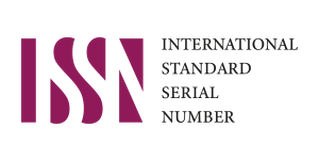Iron in Well Water: Case Study in Dulalowo and Heledulaa Districts
Abstract
Keywords
Full Text:
PDFReferences
Arifin, Z., Darmono, S. A., & Pratama, R. (2006). Validasi Metode Analisis Logam Copper (Cu) dan Plumbum (Pb) dalam Jagung dengan Cara Spektrofotometer Serapan Atom. Seminar Nasional Peternakan Dan Veteriner.
Bempa, S. H. L. (2020). Karbon Aktif Teraktivasi ZnCl2 sebagai Adsorben Logam Fe(III) Di Limbah Laboratorium Universitas Negeri Gorontalo. Jambura Journal of Chemistry, 2(17-25).
Cuningham, W. P., Cuningham, A. M., & Saigo, W. B. (2005). Environment Science: A Global Concern. Boston, McGsraw Hill Company.
Darmono. (1995). Logam dalam sistem biologi makhluk hidup. Penerbit Universitas Indonesia.
Erni, M., Intan, J. O., & Tangio, S. J. (2020). Pemanfaatan Gulma Siam (Chromolaena odarata L.) sebagai Adsorben Logam Timbal. Jambura Journal of Chemistry, 2(1), 26-33.
Gultom, J., Amin, B., & Dan Ikhwan, Y. (2011). Kandungan Logam Berat Timbal (Pb) Dan Tembaga (Cu) Pada Air Laut dan Sedimen di Perairan Batubara Provinsi Sumatera Utara. 10 hal. Jurnal Kimia, 3(2), 1-10.
Khaira, K. (2016). Penentuan Kadar Besi (Fe) Air Sumur dan Air PDAM dengan Metode Spektrofotometri. Sainstek: Jurnal Sains Dan Teknologi, 5(1), 17-23.
Kim, J.-J., Kim, Y.-S., & Kumar, V. (2019). Heavy metal toxicity: An update of chelating therapeutic strategies. Journal of Trace Elements in Medicine and Biology, 54, 226-231.
Kristianingrum, S. (2012). Kajian berbagai proses destruksi sampel dan efeknya. Prosiding Seminar Nasional Penelitian, Pendidikan Dan Penerapan MIPA, Fakultas MIPA, Universitas Negeri Yogyakarta, 2.
Kusnaedi. (2010). Megolah Air Kotor Untuk Air Minum. Swadaya.
La Kilo, A. (2018). Kimia Anorganik: Struktur dan Kereaktifan (1st ed.). UNG Press.
La Kilo, A., Costanzo, A., Mazza, D., Martoprawiro, M. A., Prijamboedi, B., & Ismunandar. (2020). Highest ionic conductivity of BIMEVOX (Me = 10% cu, 10% ga, 20% ta): Computational modeling and simulation. Indonesian Journal of Chemistry, 20(3), 510-519. https://doi.org/10.22146/ijc.42635
Mulia, R. M. (2005). Kesehatan lingkungan. Yogyakarta: Graha Ilmu.
Nasution, H. I. (2012). Analisis kandungan logam berat Besi (Fe) dan Seng (Zn) pada air sumur gali disekitar Tempat Pembuangan Akhir Sampah. Jurnal Penelitian Saintika, 12(02), 165-169.
Putri, A. D. N., Utomo, Y., & Kusumaningrum, I. K. (2013). Analisis Kandungan Besi Di Badan Air Dan Sedimen Sungai Surabaya. Jurusan Kimia. FMIPA. Universitas Negeri Malang. Malang.
Simbolon, R. (2011). Pengaruh Penambahan Arang Tongkol Jagung Dan Serbuk Tongkol Jagung (Zea Mays) Terhadap Penurunan Kadar Besi (Fe), Total Padatan Tersuspensi (TSS), Total Padatan Terlaryt (TDS), Kekeruhan, Dan pH Pada Air Rawa.
Sudjana. (1996). Teknik Analisis Regresi dan Korelasi. Tarsito.
Sundra, I. K. (2006). Kualitas Air Bawah Tanah Di Wilayah Pesisir Kabupaten Badung. Universitas Udayana.
Suyanto, A., Kusmiyati, S., & Retnaningsih, C. (2010). Residu Logam Berat Ikan Dari Perairan Tercemar Di Pantai Utara Jawa Tengah (Residual Heavy Metals in Fish from Contaminated Water in North Coast of Central Java). Jurnal Pangan Dan Gizi, 1(2).
Tasanif, R., Isa, I., & Kunusa, W. R. (2020). Potensi Ampas Tebu sebagai Adsorben Logam Berat Cd, Cu, dan Cr. Ambura Journal of Chemistry, 2(1), 34-44.
DOI: https://doi.org/10.34312/jambchem.v2i2.6990
Refbacks
- There are currently no refbacks.
Copyright (c) 2020 Jambura Journal of Chemistry
EDITORIAL OFFICE


This work is licensed under a Creative Commons Attribution-NonCommercial 4.0 International License.




